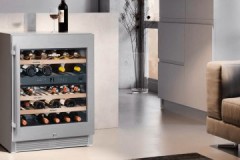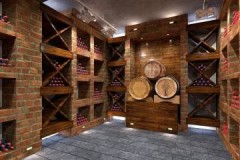Sommelier recommendations: how long can opened wine be stored?
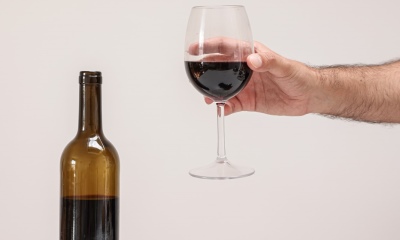 Corked wine can sit for years. But as soon as the cork is removed, the drink begins to come into contact with air, which triggers chemical processes.
Corked wine can sit for years. But as soon as the cork is removed, the drink begins to come into contact with air, which triggers chemical processes.
Even if the cork is quickly returned to its place, oxidation processes will already have started, and the shelf life will begin to decrease significantly.
We will tell you in the article whether and how to store open wine at home.
Content
Shelf life after opening the bottle
Depending on the type of wine, the shelf life of the drink is determined. But if the conditions are not suitable, the product may not only lose its qualities, but even become unsafe for health in literally a matter of hours:
 Reds. Red wines, on average, store better than white wines. After opening the bottle, they can be kept in a cool place for up to 3-5 days.
Reds. Red wines, on average, store better than white wines. After opening the bottle, they can be kept in a cool place for up to 3-5 days.- White. White wines tend to lose their properties quite quickly. After uncorking the bottle, it is advisable to find a use for the drink within just 1-2 days.
- Sparkling. Sparkling wines lose their properties the fastest. It is recommended to finish the drink within 24 hours.
- Fastened. Dessert and fortified wines can be stored for up to a week after opening the bottle. This is due to the presence of a higher percentage of sugar and alcohol than in other wines.
Conditions
After the bottle is uncorked, the liquid begins to come into contact with air. This triggers oxidation processes and chemical reactions that affect the taste, aroma and other characteristics of the drink.
Temperature
After uncorking the bottle, no matter how much content is left, it must be placed in the refrigerator. Staying cool helps slow down oxidative processes and it is better to preserve the drink. It is advisable that the air temperature is no higher than +10°C.
Humidity
It is advisable to maintain air humidity in the place where the bottle is stored at 70%. Some deviations are acceptable, since the wine will not be stored for a long time after uncorking.
Lighting
Ultraviolet radiation has a bad effect on the quality of wine, both corked and in an open bottle. Being in the light will significantly speed up the process of product deterioration, so you need to choose a dark place.
Where is the best place to keep it after opening?
It is advisable to store an opened bottle of wine in a cool and dark place.. Depending on the conditions, a place with the most suitable conditions is selected.
Cellar
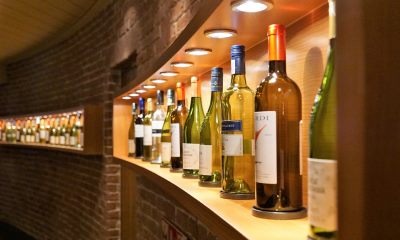 Even open bottles of wine can be stored in a cellar if it is suitable for this purpose. The premises must maintain optimal conditions for wines.
Even open bottles of wine can be stored in a cellar if it is suitable for this purpose. The premises must maintain optimal conditions for wines.
There are special gadgets to help. These can be split systems, humidifiers and dehumidifiers, etc.
If possible, then it is possible to install special equipment for storing open wines
Apartment
In a city apartment, a opened bottle should not be left simply on the table, placed on a window or on open cabinet shelves. In this case, the drink will oxidize very quickly and become unusable. Any cool, dark place can be used, but the refrigerator is best.
Fridge
The temperature in the refrigerator is suitable for finding already uncorked bottles.To preserve the entire bouquet of aroma and taste, the container must be carefully closed with a stopper.
This video will show you how to store an open bottle of wine:
In what container?
Which container is best to store wine after opening depends on the volume of the product and the possibility of providing suitable conditions. Glass bottles are the most popular and practical option, allowing you to save the remains of the started wine.
Plastic
If the wine is in plastic, then it, even in a closed bottle, cannot last long. If possible, it is better to pour the drink into glass. Otherwise, you should make sure that the bottles are put in the refrigerator and used within the specified time.
Barrels
Barrels are one of the traditional ways of organizing storage guilt. If this option is chosen, then all storage rules must be observed - coolness, relatively low humidity, etc. Particular attention is paid to the quality of the oak barrels themselves.
Glass
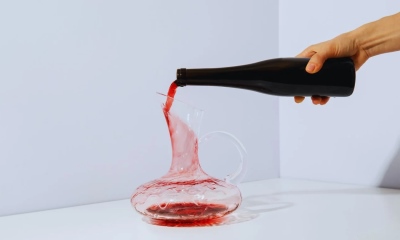 If there is little product left, it can be poured into a smaller bottle. This will reduce the contact of the wine drink with air and reduce the rate of oxidation.
If there is little product left, it can be poured into a smaller bottle. This will reduce the contact of the wine drink with air and reduce the rate of oxidation.
The container must be sealed with a stopper. You can use the one you have.
In this case, it is important to insert it into the neck so that the wine-colored side is on the inside and the uncolored side is on the outside. If this rule is ignored, bacteria that are on the outside of the cork can be brought inside.
After this, the wine must be sent to a cool place. A refrigerator is suitable for this. The bottle must be placed vertically.
An accessory such as a reusable vacuum plug can be a useful addition.. With its help, you can close the opened bottle, displacing excess air from the vessel.
Special equipment
To better preserve already opened wine, special equipment can be used. It is purchased by some restaurants and wine connoisseurs with elite collections. Gadgets allow you to be able to pour only one glass, leaving the rest of the wine for next time.
Vacuum plug
Vacuum plug - a fairly budget option. This is a manual vacuum pump. Can be used for any wines except sparkling ones. The shelf life is not long. For elite species - no more than a couple of days.
Coravin
The gadget is a nipple needle made of Teflon. With this device you can “extract” the contents of a bottle through the cork. The operating principle is based on the displacement of liquid by argon supplied under pressure inside the bottle. The gas cylinder is replaceable.
Wine dispenser
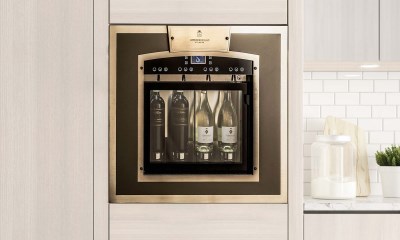 Upscale restaurants that serve expensive wines by the glass often use a wine dispenser.
Upscale restaurants that serve expensive wines by the glass often use a wine dispenser.
Equipment is a special wine cabinet, in which bottles are stored. The dispenser can be designed for a certain number of bottles. It doesn't have a budget price.
Dispensers can be organized in different ways, depending on the model and manufacturer.
Conclusion
Storing opened wine has its own characteristics. These include more stringent conditions of detention and a significant reduction in storage time.It is also necessary to exclude a situation in which the started wine is moved from warm to cool several times and/or shaken.
